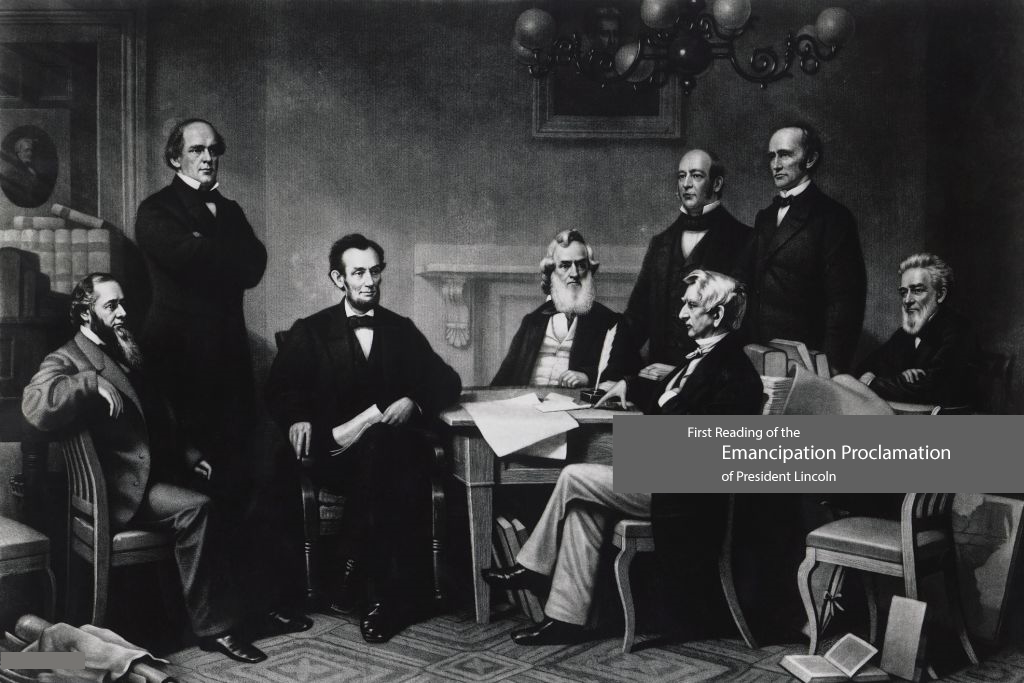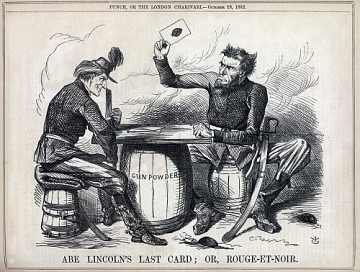

On January 1st, 1863, President Abraham Lincoln decided to issue the Emancipation Proclamation to force the Confederacy to surrender and join the Union. He knew the South’s economy of agriculture heavily depended on the manual labor of about 4 million slaves. With this knowledge, Lincoln contrived a plan to free the slaves in the rebellion states, strangulating resources which powered the South leading to the fall of the Confederacy. Without the slaves, the Confederacy would not survive, and the Union would ultimately win the war. As a result, the efforts to eradicate slavery would prevail, and the Confederacy would dissolve to be part of the Union. This is all why Lincoln decided to write the Emancipation Proclamation.
When in 1861, President Abraham Lincoln took office he declared that keeping the nation together was his constitutional duty and not freeing the slaves. That was his goal in the first year of the Civil War. However, heavy wartime losses and slaves breaking away behind Union battle lines dictated that if he ought to win the Civil War and successfully bring the South into the Union then he must first attend to the issue of slavery. Therefore on September 22, 1862, Lincoln issued a preliminary Emancipation Proclamation and followed up with a final version on January 1, 1863. The Emancipation Proclamation did not free any slaves however it provided a golden opportunity for the slaves in the rebel states to escape and join the Union Army which caused a fundamental shift in the Civil War. The South lost critical resources and eventually surrendered to the Union.
Primary Sources
“‘A Complaint from the London Times’ Editorial Letter on the Emancipation Proclamation.” Civil War Trust, Civil War Trust, www.civilwar.org/learn/primary-sources/complaint-london-times-editorial-letter-emancipation-proclamation.
This London Times newspaper article of a letter helped me understand an international response to the proclamation. It also gave me a white man’s perspective on the proclamation describing how the proclamation is not for the end of slavery but instead is a possible massacre of the white women and children.
“Emancipation Proclamation (1863).” Our Documents - Emancipation Proclamation (1863), www.ourdocuments.gov/doc.php?flash=false&doc=34#. This Emancipation Proclamation document, written by the former president Abraham Lincoln, helped me understand what the emancipation was supposed to do. It also gave me the critical states for which the emancipation took place.
“Emancipation Digital Classroom.” Emancipation Digital Classroom, housedivided.dickinson.edu/sites/emancipation/category/history-lab/primary-sources/. These first-hand accounts showed me the effects of the emancipation on the slaves in the rebel states. They also gave me an extensive understanding of the different perspectives of people in the North and South.
“On This Day.” The New York Times, The New York Times, www.nytimes.com/learning/general/onthisday/big/0922.html#article. This The New York Times newspaper much helped me to understand the contents of the Emancipation Proclamation. It also gave me essential points from the Emancipation Proclamation.
Tenniel, John. “Abe Lincoln’s Last Card.” The National Museum of American History, Chicago, 18 Oct. 1863, americanhistory.si.edu/changing-america-emancipation-proclamation-1863-and-march-washington-1963/1863/lincoln-and. This photograph of Lincoln and a Confederate soldier playing cards helped me to understand how the South poorly portrayed the great intentions of Lincoln that he was just trying to save his government by inciting slaves to revolt. It also gave me information on why the South attempted to circumvent the practices of slavery.
Secondary Sources
“Emancipation Proclamation.” HistoryNet, www.historynet.com/emancipation-proclamation. This informative website about the Emancipation Proclamation helped me to understand the historical aspects of why Lincoln had to issue the proclamation. It also presented me the events which helped Lincoln release the emancipation and furthermore abolish slavery.
“The Emancipation Proclamation.” National Archives and Records Administration, National Archives and Records Administration, http://www.archives.gov/exhibits/featured-documents/emancipation-proclamation. This website of the Emancipation Proclamation helped me to clarify the objectives of the proclamation. It also gave me information on the ways slaves could have gotten liberty by joining the Union’s military.
“Emancipation Proclamation.” West's Encyclopedia of American Law, Encyclopedia.com, www.encyclopedia.com/history/united-states-and-canada/us-history/emancipation-proclamation. This encyclopedia of the Emancipation Proclamation helped me to understand more about Lincoln’s desire of emancipating the slaves. It also gave me details about how the Emancipation Proclamation shifted Lincoln’s thoughts on slavery and the Civil War.
Foner, Eric. “The Emancipation of Abe Lincoln.” The New York Times, The New York Times, 31 Dec. 2012, http://www.nytimes.com/2013/01/01/opinion/the-emancipation-of-abe-lincoln.html. This article of Lincoln helped me to understand how the issuing of the proclamation ultimately changed Lincoln. It also showed me how Lincoln shifted his views on the fact that the abolishment of slavery was the goal of the Union.
History.com Staff. “Emancipation Proclamation.” History.com, A&E Television Networks, 2009, www.history.com/topics/american-civil-war/emancipation-proclamation. This informative website about President Lincoln and his famous Emancipation Proclamation helped me to understand the critical events leading up to the preliminary announcement of the Emancipation Proclamation. It also gave me details about the main reasons why Lincoln decided to issue the Emancipation Proclamation and how publishing the emancipation was a boost in the war for the Union.
